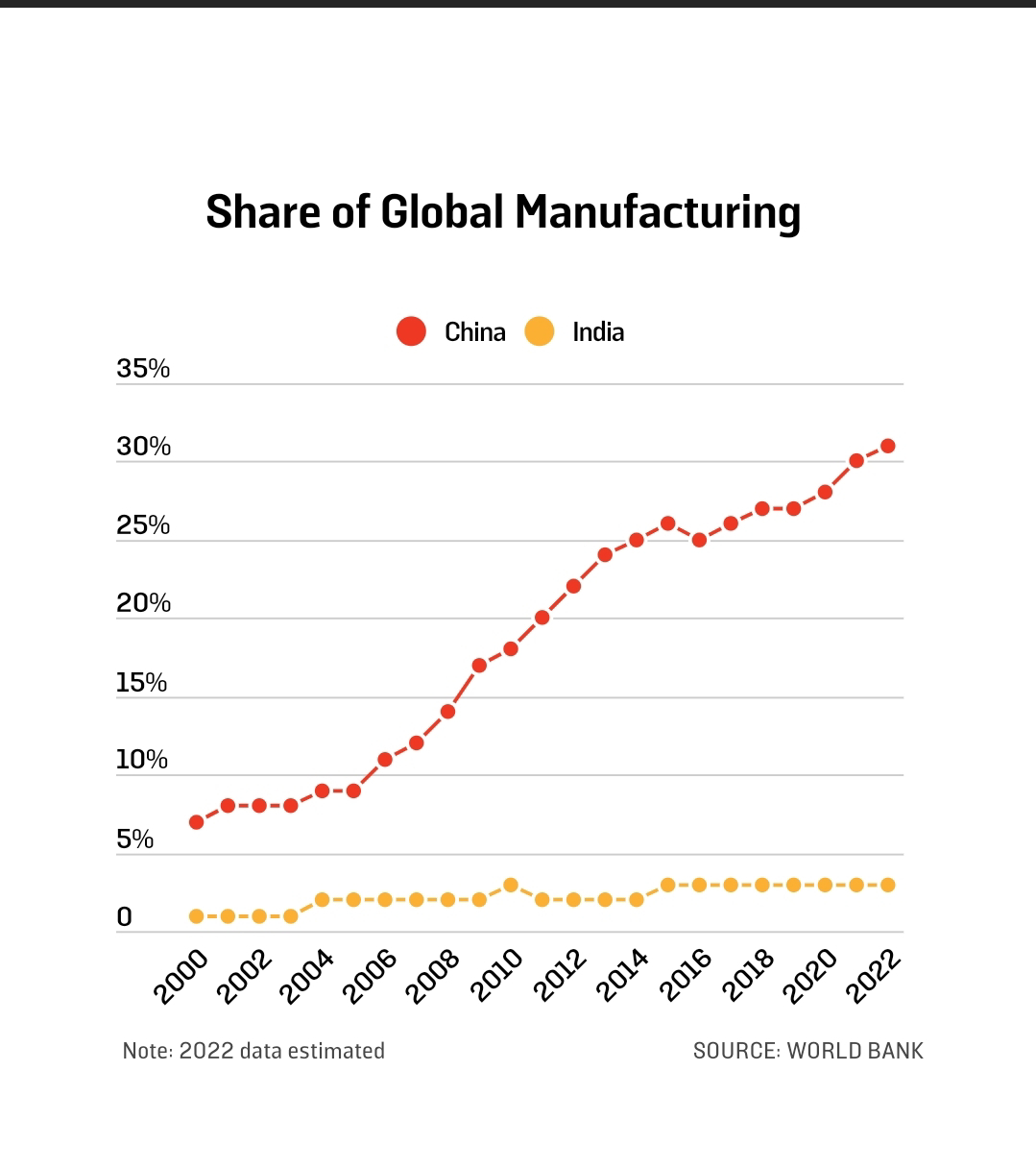Four inconvenient truths make this scenario unlikely.
When India overtook China in April to become the world’s most populous nation, observers wondered: Will New Delhi surpass Beijing to become the next global superpower? India’s birth rate is almost twice that of China. And India has outpaced China in economic growth for the past two years—its GDP grew 6.1 percent last quarter, compared with China’s 4.5 percent. At first glance, the statistics seem promising.
This question has only become more relevant as Indian Prime Minister Narendra Modi meets with U.S. President Joe Biden in Washington this week. From a U.S. perspective, if India—the world’s largest democracy—really could trump China, that would be something to shout about. India is China’s natural adversary; the two countries share more than 2,000 miles of disputed, undemarcated border, where conflict breaks out sporadically. The bigger and stronger China’s competitors are in Asia, the greater the prospects for a balance of power favorable to the United States.
Yet before inhaling the narrative of a rapidly rising India too deeply, we should pause to reflect on four inconvenient truths.
First, analysts have been wrong about India’s rise in the past. In the 1990s, analysts trumpeted a growing, youthful Indian population that would drive economic liberalization to create an “economic miracle.” One of the United States’ most thoughtful India analysts, journalist Fareed Zakaria, noted in a recent column in the Washington Post that he found himself caught up in the second wave of this euphoria in 2006, when the World Economic Forum in Davos heralded India as the “world’s fastest-growing free market democracy” and the then-Indian trade minister said that India’s economy would shortly surpass China’s. Although India’s economy did grow, Zakaria points out that these predictions didn’t come true.
Fourth, when assessing a nation’s power, what matters more than the number of its citizens is the quality of its workforce. China’s workforce is more productive than India’s. The international community has rightly celebrated China’s “anti-poverty miracle” that has essentially eliminated abject poverty. In contrast, India continues to have high levels of poverty and malnutrition. In 1980, 90 percent of China’s 1 billion citizens had incomes below the World Bank’s threshold for abject poverty. Today, that number is approximately zero. Yet more than 10 percent of India’s population of 1.4 billion continue to live below the World Bank extreme poverty line of $2.15 per day. Meanwhile, 16.3 percent of India’s population was undernourished in 2019-21, compared with less than 2.5 percent of China’s population, according to the most recent United Nations State of Food Security and Nutrition in the World report. India also has one of the worst rates of child malnutrition in the world.
Fortunately, the future does not always resemble the past. But as a sign in the Pentagon warns: Hope is not a plan. While doing whatever it can to help Modi’s India realize a better future, Washington should also reflect on the assessment of Asia’s most insightful strategist. The founding father and long-time leader of Singapore, Lee Kuan Yew, had great respect for Indians. Lee worked with successive Indian prime ministers, including Jawaharlal Nehru and Indira Gandhi, hoping to help them make India strong enough to be a serious check on China (and thus provide the space required for his small city-state to survive and thrive).
But as Lee explained in a series of interviews published in 2014, the year before his death, he reluctantly concluded that this was not likely to happen. In his analysis, the combination of India’s deep-rooted caste system that was an enemy of meritocracy, its massive bureaucracy, and its elites’ unwillingness to address the competing claims of its multiple ethnic and religious groups led him to conclude that it would never be more than “the country of the future”—with that future never arriving. Thus, when I asked him a decade ago specifically whether India could become the next China, he answered directly: “Do not talk about India and China in the same breath.”
Since Lee offered this judgment, India has embarked on an ambitious infrastructure and development agenda under a new leader and demonstrated that it can achieve considerable economic growth. Yet while we can remain hopeful that this time could be different, I, for one, suspect Lee wouldn’t bet on it.
https://foreignpolicy.com/2023/06/24/india-china-biden-modi-summit-great-power-competition-economic-growth/



No comments:
Post a Comment